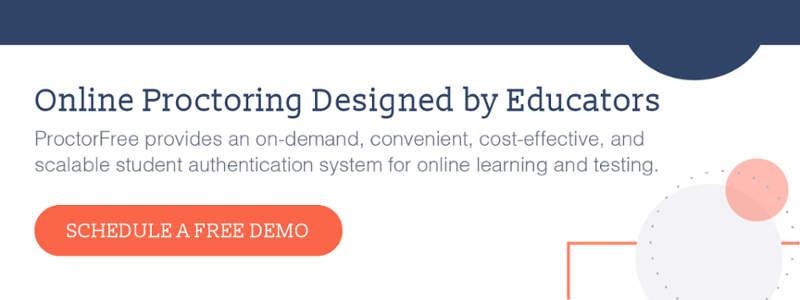Blog
exam proctoring
MOOC
higher education
online classes
online proctor
test centers
machine learning
artificial intelligence

Over the years, the concept of artificial intelligence has inspired many a science fiction story, but the reality is more straight-forward. Machine learning, algorithms and automated decision-making aren’t a full-on replacement for humans, but rather an augmentation. There will always be great humans behind the scenes.
In the case of online proctoring, AI allows humans to do more and be more places at once — in a virtual sense, of course. And like any technology, it’s important to consider how AI is applied and how to prevent overreach. Here is our analysis on AI and how to best implement it in online proctoring:
Accuracy is a priority
Virtual proctoring tools work by detecting anomalies or abnormal occurrences during a testing session. It’s also important to work alongside the testing experience in a way that does not contribute to test anxiety, but also provides results back to test sponsors to make their job easier in reviewing large cohorts of test takers.
For instance, if a proctoring tool implements automatic decision-making, the provider should evaluate its algorithm for quality control in an effort to keep errors to a minimum. Test sponsors should also be made aware of how anomalies are identified, analyzed and presented to them. While it’s impossible to detect every potential anomaly, continuous improvement is good for all parties to include test takers, test sponsors or anyone with a legitimate use case to be involved in proctoring an online exam or knowledge assessment.
Keep it fair for everyone
By participating in an exam or assessment, test takers pledge to operate under an institution’s (or test sponsor’s) honor code with honesty and fairness. It’s important providers do the same while making an effort to optimize their platforms to promote fairness.
Online proctoring providers should also consider how they package and present results to test sponsors, for whom results can influence judgment. After all, it is easy to underestimate the power of suggestion. Providers should work to minimize their influence, end to end.
Be open and honest
In an age of ever-present technology, it’s crucial to stay mindful of individual rights and make appropriate disclosures when necessary. We all have a right to know what we can expect from interactions with data-processors, test sponsors and proctoring providers, especially in situations where artificial intelligence or machine learning is applied.
Test takers should be notified in advance if an algorithm is used to make decisions about a test score or end result that could influence their grade. If automated decision-making is implemented, they should be provided with a sensible explanation of how it works. Providers should also provide test sponsors with information about the use of AI or advanced analytical tools and processes. No system is perfect, and test takers should be able to access and easily understand what happens as part of an online proctoring experience.
Humans and machines can work together
There will never be a replacement for the amazing humans that dedicate themselves to careers in education. Proctoring providers such as ProctorFree are there to assist, not replace. Test sponsors, in-person proctoring centers and the great people that facilitate them can all benefit from the application of online proctoring tools with the intended outcome of it making their lives easier. Together, automated online proctoring with human oversight brings out the best in both worlds.
Are you interested in learning more about how online proctoring tools can help your in-person proctoring center? Contact us for an overview today.


